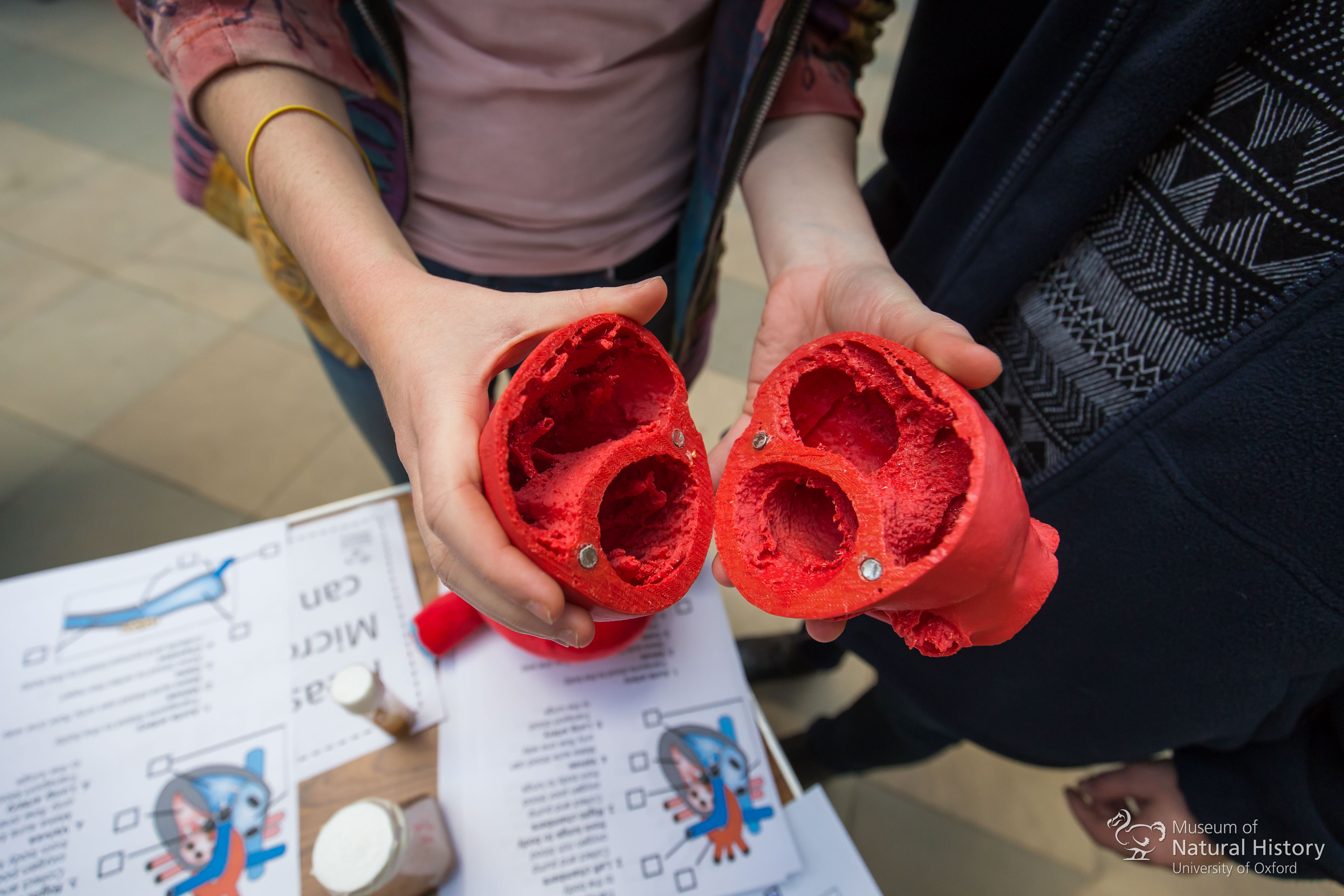Flies in space explained at Super Science Saturday
Children were wowed about flies being in space as Dunn School researchers introduced the science behind space-based fly experiments at a “Super Science Saturday” event at Oxford University Museum of Natural History on 26 November 2016.
The theme of the event was “Science behind the Headlines” and Raff lab members Metta Pratt, Lisa Gartenmann and Ines Alvarez Rodrigo’s activity considered the science behind fruit fly experiments on heart function, to be conducted on the International Space Station in a mission next Spring.
The museum saw 2,450 visitors attend the four-hour science fair and feedback was extremely positive. One awe struck child said: “I had no idea flies could go to space”.
Budding young space scientists were inspired by a life size cardboard cut out of UK born astronaut Tim Peake who participated in the 186-day Principia mission on the space station earlier this year.
The Fruit Fly Lab-02 experiment scheduled to begin on the space station in March 2017 will focus on heart and cardiovascular function and run over six months.
Approximately 77% of human disease genes are similar to those found in fruit flies so studies of fruit flies help researchers understand the underlying mechanisms of human diseases. Flies have been used previously for research studies in space, including the mission Tim participated in.
Explaining the science behind The Fruit Fly Lab-02 project, Metta said: “We know that spaceflight effects the body in numerous ways including the heart and cardiovascular system. Because at the genetic level flies and humans are actually very similar the experiment on the International Space Station next year will look at determining the cellular and genetic mechanisms that cause problems in the heart in space. Tests will compare fruit flies hatched in space with flies hatched on Earth to understand how prolonged spaceflight affects fruit fly heart function.”
Further information: If you are a scientist and would like to get involved in workshops and other events at the museum please contact Carly Smith-Huggins
(Photo credits: Oxford University Museum of Natural History)
